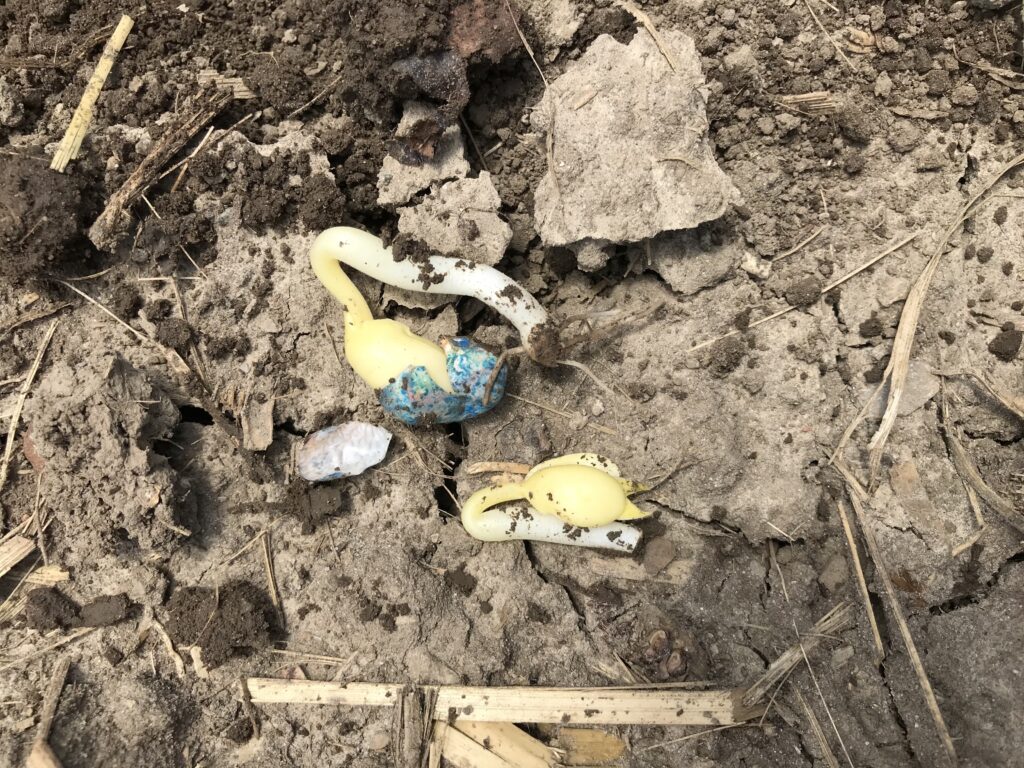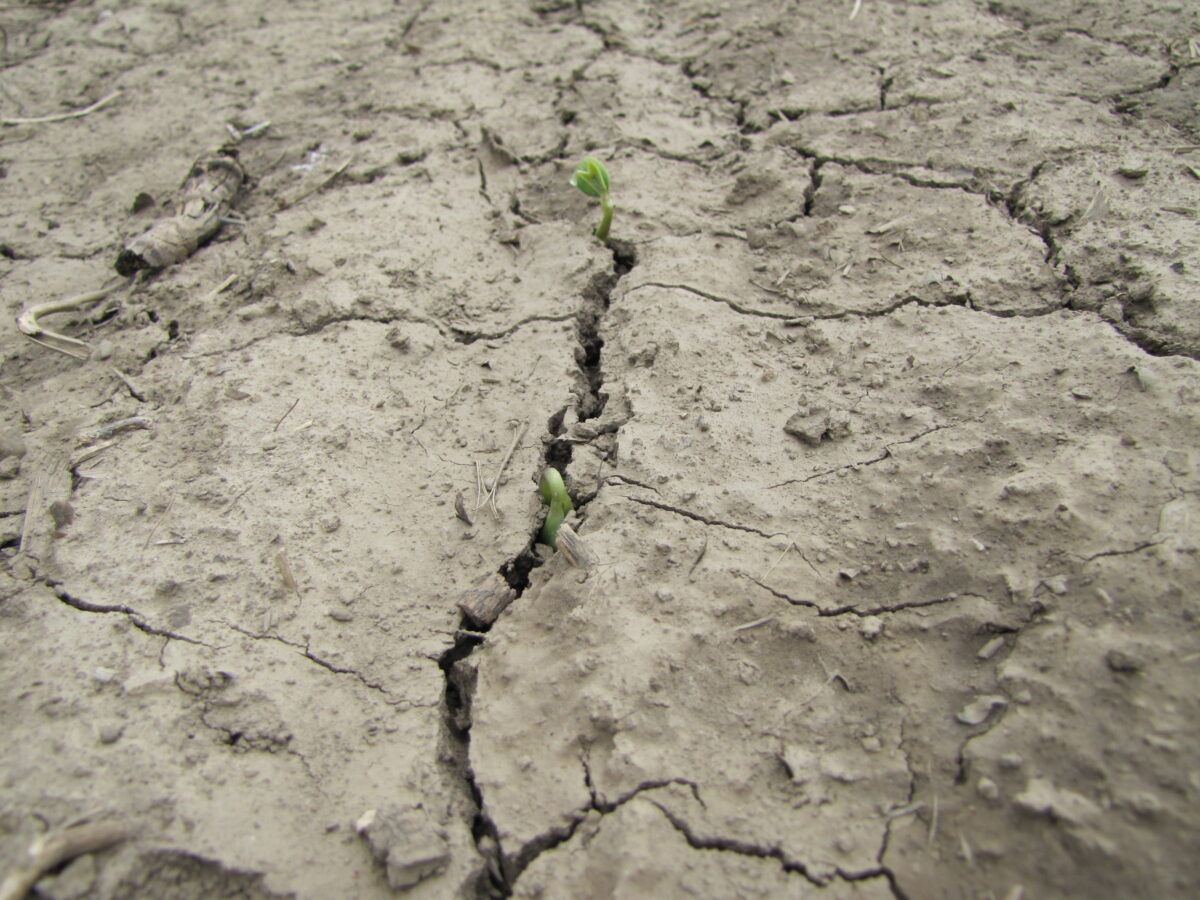Pounding rains from thunderstorms can result in severe crusting on heavy soil types, or soils with poor aggregate stability, and can inhibit bean emergence, particularly if hot, dry conditions bake the soil surface. Soil loosening and aeration may be required. There is no advantage to waiting once a crust has been identified. Waiting may increase the lack of uniformity of the stand. It may be better to have a lower, more uniform stand, than an uneven stand with a higher population. Rotary hoes, culti-packers, coulter-carts, no-till drills, planters and harrows have all been used successfully (and unsuccessfully) in breaking crusted soils.
Typically the rotary hoe can reduce bean stands by 5%–10%, but the extra beans that emerge more than compensate for this reduction. Rotary hoeing during the “hook” stage of bean emergence will result in significant plant losses. Rotary hoeing during mid-day, when bean plants are more flaccid, or limp, will reduce plant damage. Target speed is 10–20 km/h. Adjust the equipment over a short distance and check that the percentage of bean plants buried or uprooted is less than 10%. It is normal for the crop to look a little “tough” following rotary hoeing. Weed control will also be enhanced when uprooted weeds dry out in mid-day heat.
Beans which germinate, but are slow to emerge, will often develop a thickened hypocotyl (stem), leaf out underground, or develop seedling blight. When evaluating stands, remember that stresses on the crop are additive and typically have a greater impact on dry edible beans than soybeans. An adequate stand of dry edible beans is a minimum of two-thirds to three-quarters of a full stand. Dry edible beans have a limited ability to branch and compensate for stand losses.

